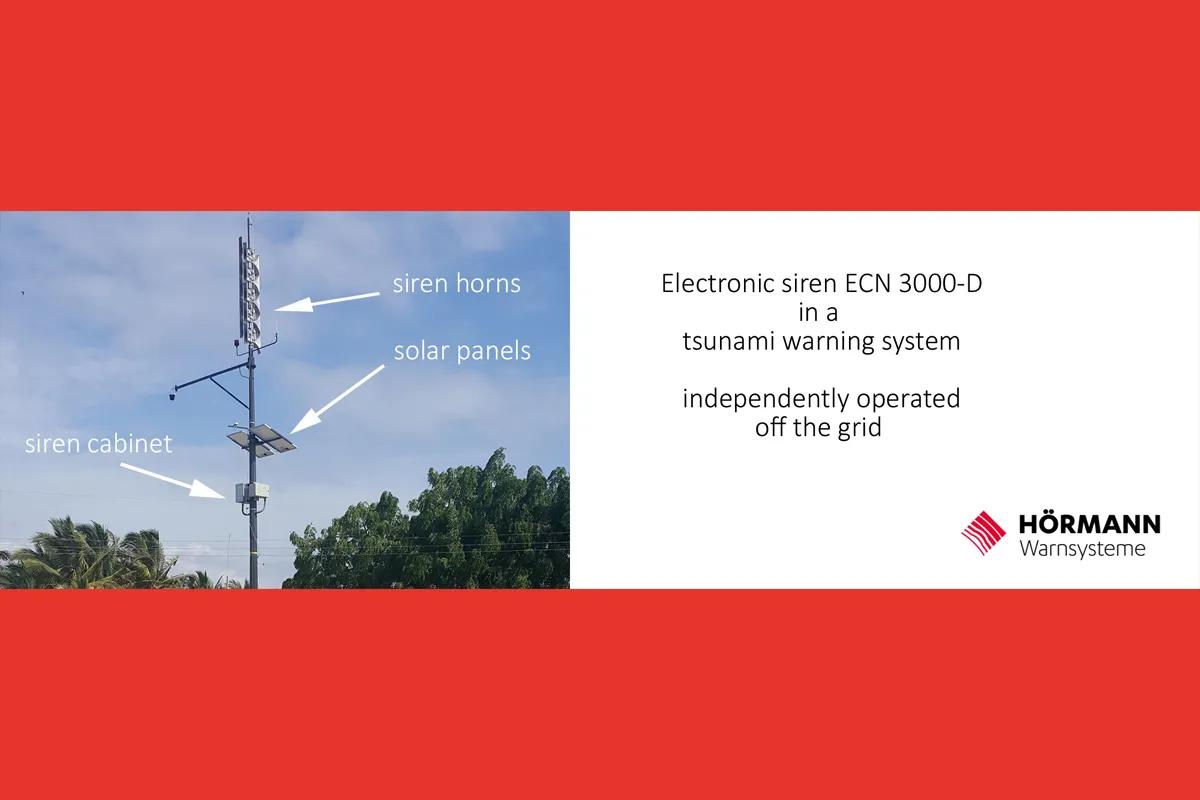Solar power supply with battery buffering makes electronic sirens self-sufficient and independent of the location
When setting up a siren warning system, independence from the power grid is often required. There are many reasons for this. Often, the optimal location is simply not connected to the power grid and it would be too costly to set up an independent grid connection. Or self-sufficient operation is deliberately desired.
Today, population warning is usually carried out via a mix of different warning means that are integrated into a digital communication infrastructure: Electronic sirens, mobile phones, TV, radio, display boards, etc. Electronic sirens have the so-called wake-up function - the wailing of the siren is perceived first, so that people can inform themselves and get to safety.
An electronic siren consists of the siren horns and the siren cabinet, which contains the control electronics as well as the batteries, the digital amplifiers, a control panel for triggering at the site and, if necessary, a microphone for voice announcements. The siren horns are mounted on free-standing masts, or with pipe stands on roofs or walls. The siren cabinet can be free-standing or also attached to the mast. These electronic sirens are integrated into a warning system via a communication infrastructure and, depending on their design, can be triggered and monitored centrally, regionally or locally, for example via radio, GSM/GPRS, satellite, fibre optics, TCP/IP, RS232. Modern electronic sirens draw their power directly from the batteries. These are usually buffered via the power grid, or alternatively by solar panels. This ensures that the electronic siren continues to be supplied and ready for operation (stand-by time) in the event of a power failure, when other warning means no longer function due to a power failure.
